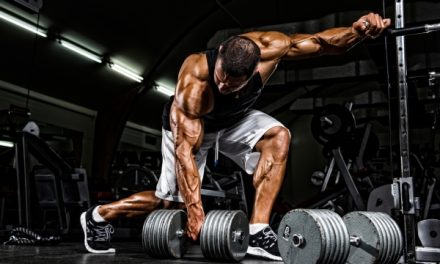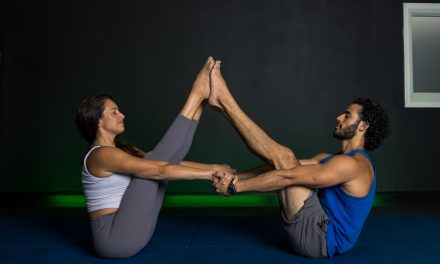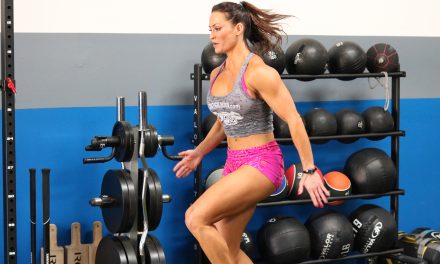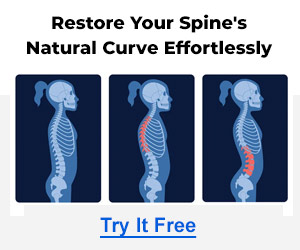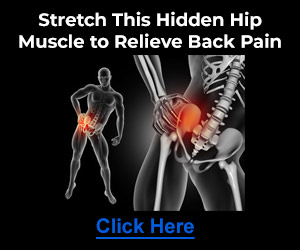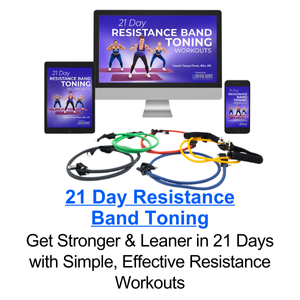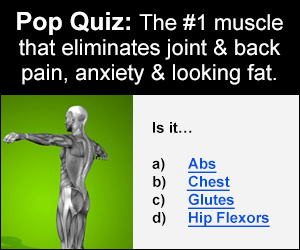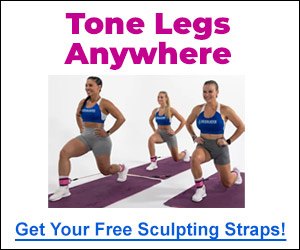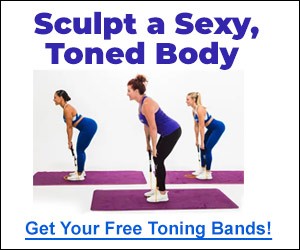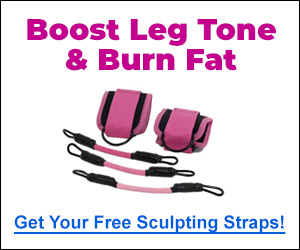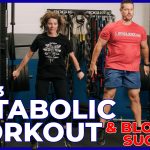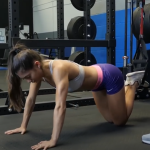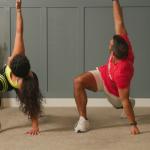Welcome to the ultimate guide to understanding and harnessing the power of your hips.
In the world of fitness and well-being, the hips often play a silent yet pivotal role.
From the psoas muscle to the intricate network of hip flexors, these often-underappreciated components of your anatomy are the linchpin to achieving strength, mobility, and overall health.
In this comprehensive article, we’ll delve deep into the world of hips, exploring everything from the problems associated with tight hips to the benefits of having strong ones.
We’ll even provide you with some invaluable tips for maximizing your hip flexors.
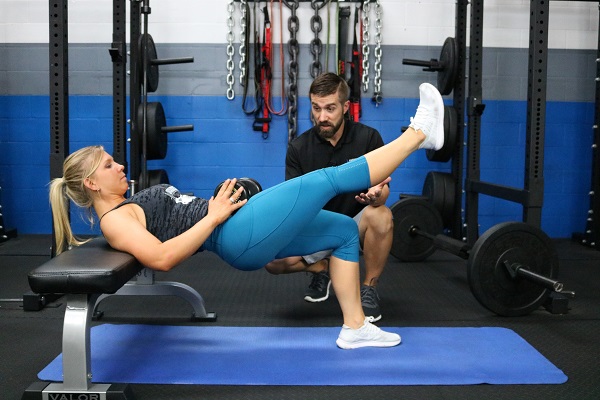
Unveiling the Hips and Their Complexity
The hips play a central role in overall physical health and functionality. Understanding the significance of the hips and how they influence the entire body is key to appreciating their importance.
The Anatomy of the Hips
At the core of your hip structure lies the hip joint, a remarkable ball-and-socket joint formed by the femur (thigh bone) and the pelvic bone.
This joint acts as a pivotal connection point between your upper and lower body and is responsible for facilitating a wide range of movements:
- Flexion: Bending your hip joint, such as lifting your knee toward your chest.
- Extension: Straightening your hip joint, like when you push your leg backward.
- Abduction: Moving your leg away from the midline of your body.
- Adduction: Bringing your leg back toward the midline.
- Rotation: Turning your thigh inward (internal rotation) or outward (external rotation).
These movements are not only vital for daily activities but are also fundamental to athletic performance, from running and jumping to squatting and lunging.
The Psoas Muscle: A Key Player
The psoas muscle, often referred to as the “hip flexor,” is a deep-seated muscle that runs from the lumbar spine through the pelvis and attaches to the femur.
The psoas plays a pivotal role in hip flexion and is integral to many movements, including lifting your knees, bending at the waist, and bringing your thigh closer to your abdomen.
More than a mere mover of the legs, the psoas has a profound impact on your posture, spine alignment, and overall well-being.
A well-functioning psoas muscle contributes to a strong and stable core, which is essential for maintaining proper posture and spinal health.
Hip Flexors: A Network of Muscles
The term “hip flexors” encompasses a group of muscles responsible for hip flexion—the act of bringing your thigh toward your abdomen.
These muscles work in synergy to enable movements that are crucial in daily life, sports, and fitness activities.
The primary hip flexor muscles include:
- Psoas Major: The deep hip flexor that originates in the lumbar spine and attaches to the femur.
- Iliacus: Located deep within the pelvis, it works in tandem with the psoas.
- Rectus Femoris: Part of the quadriceps muscle group, it assists with both knee extension and hip flexion.
- Tensor Fasciae Latae (TFL): A muscle on the side of the hip that plays a role in stabilizing the hip and pelvis.
- Sartorius: A long, thin muscle that runs down the thigh and contributes to hip and knee flexion.
Together, these muscles ensure that your hips remain flexible and functional, allowing you to perform a wide range of activities with ease.
The Impact of Hip Health on the Entire Body
Understanding the complexity and importance of the hips is essential because they serve as a cornerstone of overall physical health. Here’s how the hips impact the entire body:
Posture and Alignment: Proper hip function is crucial for maintaining good posture and spinal alignment. When the hips are balanced and flexible, it helps prevent issues like kyphosis, lordosis, and scoliosis.
Core Strength: The psoas, along with other hip flexors, plays a vital role in core strength. A strong core supports the spine, improves stability, and reduces the risk of lower back pain.
Balance and Stability: Well-functioning hips contribute to balance and stability during everyday activities and exercise. Athletes, in particular, rely on hip stability for agility and control.
Functional Movement: The hips are integral to functional movement, including walking, running, bending, lifting, and even sitting. Without proper hip mobility and flexibility, these activities can become challenging or painful.
Injury Prevention: Maintaining hip health is key to injury prevention, especially in the lower back, knees, and pelvis. Strong, flexible hips reduce the risk of strains, sprains, and other musculoskeletal injuries.
The hips are more than just a set of joints and muscles; they are the linchpin to overall physical health and well-being. Understanding their complexity and recognizing their influence on the entire body is the first step in appreciating their importance.
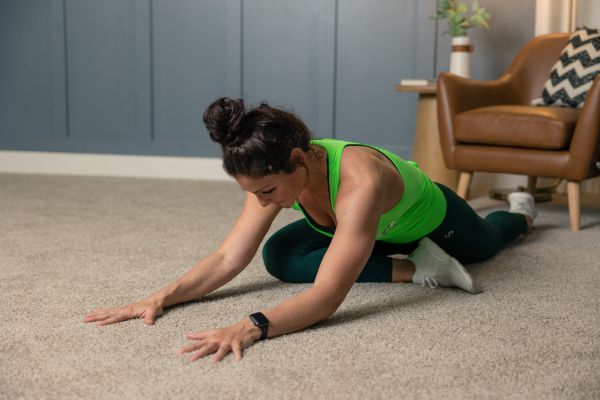
The Problem with Tight Hips
Now that we’ve introduced the hip anatomy, it’s time to delve deeper into the common issues that tight hips can create.
Limited Range of Motion
One of the most noticeable problems with tight hips is a restricted range of motion. When the hip flexors and surrounding muscles are tight, they limit the flexibility of the hip joint. This can make simple movements, such as lifting your knees, bending at the waist, or performing activities that require hip extension, significantly more challenging.
Lower Back Pain
Tight hips are often associated with lower back pain. When the hip flexors are shortened and constantly contracted, they can pull on the lumbar spine, causing an excessive arch in the lower back. This condition, known as hyperlordosis or an anterior pelvic tilt, can lead to chronic lower back discomfort, stiffness, and even more severe issues if left unaddressed.
Postural Problems
Tight hips can contribute to poor posture. An anterior pelvic tilt caused by tight hip flexors can result in an exaggerated arch in the lower back and a protruding abdomen. This posture not only affects the appearance but also places undue stress on the lumbar spine and the surrounding muscles. Over time, it can lead to muscular imbalances and discomfort.
Hip and Knee Pain
Tight hips can also manifest as pain in the hip and knee joints. The lack of flexibility in the hip can cause compensatory movements, leading to overuse injuries in the hip and knee. These injuries may include conditions like iliotibial band syndrome (ITBS), hip bursitis, or patellofemoral pain syndrome.
Impaired Athletic Performance
Athletes, in particular, should be wary of the consequences of tight hips. Limited hip mobility and flexibility can hinder performance in various sports. It can reduce the power generated in movements like sprinting, jumping, or cutting, ultimately impacting athletic achievements and increasing the risk of injury.
Incorporating hip flexibility and strengthening exercises into your routine can help alleviate these problems associated with tight hips. Regular stretching, mobility work, and strength training can gradually improve hip flexibility and alleviate pain and discomfort, allowing you to lead a more active and pain-free lifestyle.
Individuals Unaware of Their Hip Tightness
It’s essential to recognize that tight hips can affect a wide range of individuals, regardless of age, gender, or fitness level. Surprisingly, many people may have tight hips without even realizing it. Here are some groups of individuals who might be particularly susceptible:
Sedentary Workers
Those with desk jobs or professions that require prolonged periods of sitting are at significant risk of developing tight hips. The hip flexors are continually contracted while sitting, leading to shortening and tightness over time. Many individuals in this category may not realize the extent of their hip tightness until it starts causing discomfort or pain.
Frequent Travelers
People who travel frequently by car, plane, or train often spend long hours in a seated position. This extended sitting can contribute to hip tightness, and the discomfort may become more apparent during or after travel.
Athletes and Fitness Enthusiasts
Ironically, even individuals who engage in regular physical activity and exercise may still have tight hips. Some athletes focus on certain muscle groups while neglecting hip flexibility and mobility. Over time, this can lead to imbalances and tightness.
Older Adults
As we age, muscle flexibility naturally decreases. Older adults may experience hip tightness due to the natural aging process. Maintaining hip flexibility through stretching and mobility exercises becomes increasingly important as we grow older.
Individuals with Deskbound Hobbies
People who spend their leisure time on hobbies that involve sitting for extended periods, such as gaming or crafting, can also develop tight hips. They might not connect their hobby with hip tightness until discomfort or pain arises.
Those with Poor Posture
Poor posture can contribute to hip tightness. Individuals who habitually slouch, lean forward, or have an anterior pelvic tilt may experience tight hip flexors and not recognize the correlation between their posture and discomfort.
It’s crucial to remember that hip tightness can develop gradually and may not always present noticeable symptoms until it becomes more severe. Therefore, regular awareness of hip health, including flexibility and mobility, is essential for everyone, regardless of their lifestyle or age.
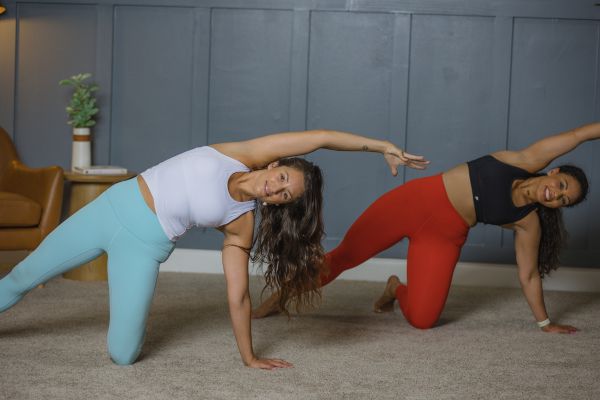
Benefits of Strong Hips
Strong hips offer a wide range of benefits that extend beyond just physical strength. Let’s examine these advantages more closely:
Enhanced Athletic Performance
Strong hips are a game-changer for athletes. Whether you’re a runner, a soccer player, a weightlifter, or engaged in any sport, powerful hips are essential. Here’s how strong hips improve athletic performance:
Explosive Power: Hip strength is vital for generating explosive power in movements like sprinting, jumping, and change of direction. The hip flexors and gluteal muscles are key players in these actions.
Agility: Agility depends on hip stability and control. Strong hips allow athletes to make rapid directional changes with precision and without risking injury.
Balance and Coordination: Hip strength contributes to overall balance and coordination, essential for sports like gymnastics, martial arts, and dance.
Injury Prevention: Strong hips act as a protective mechanism against common sports-related injuries, such as muscle strains, ligament tears, and overuse injuries.
Improved Posture
Proper posture is a reflection of good overall musculoskeletal health. Strong hips play a significant role in maintaining an upright and balanced posture:
Pelvic Stability: Strong hips support pelvic stability, preventing conditions like anterior pelvic tilt or swayback posture.
Reduced Strain: Well-developed hip muscles reduce strain on the lower back and minimize the risk of developing chronic lower back pain.
Enhanced Core Strength: The hip flexors, especially the psoas, are intertwined with the core muscles. A strong core, supported by strong hips, promotes better posture.
Injury Prevention
Strong hips are less susceptible to injuries, especially in the lower back and hip region:
Lower Back Protection: A robust core and strong hips provide lumbar spine protection by reducing the risk of disc herniation and muscle imbalances.
Hip and Knee Stability: Strong hips contribute to hip and knee joint stability, reducing the risk of injuries like hip bursitis, iliotibial band syndrome (ITBS), and patellofemoral pain syndrome.
Functional Mobility
Strong hips enhance functional mobility, making everyday activities more manageable:
Climbing Stairs: Ascending and descending stairs relies heavily on hip strength and mobility.
Bending and Lifting: Activities like picking up objects from the ground require hip strength to avoid straining the lower back.
Rising from Seated Positions: Standing up from a seated position depends on hip strength, especially for older adults.
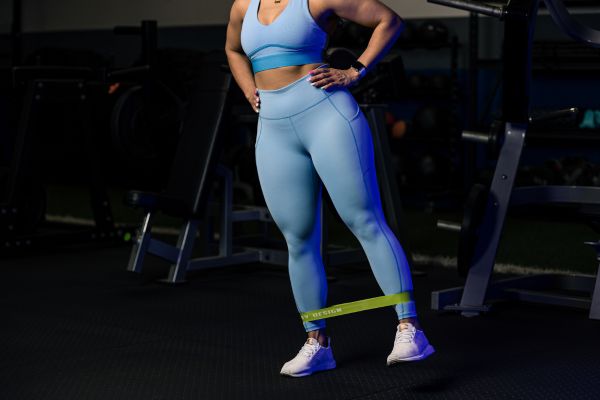
Tips for Maximizing Your Hip Flexors
Maximizing your hip flexors involves targeted strategies to improve strength, flexibility, and overall hip health:
Regular Hip Flexor Stretching
Incorporate hip flexor stretches into your daily routine:
Kneeling Hip Flexor Stretch: Kneel on one knee, with the other foot forward, and gently lean forward to stretch the hip flexors.
Pigeon Pose: A yoga pose that stretches the hip flexors and promotes flexibility.
Butterfly Stretch: Sit with your feet together, knees open, and gently press your knees toward the ground to stretch the inner thighs and hip flexors.
Dynamic Warm-Up
Before intense physical activity, perform a dynamic warm-up that includes hip flexor-specific exercises:
Leg Swings: Swing your legs forward and backward while holding onto a support for stability.
Hip Circles: Rotate your hips in circular motions to warm up the hip joint.
Hip Openers: Perform gentle hip-opening movements to activate and prepare the hip flexors.
Strengthen the Hip Muscles
Include strength training exercises targeting the hip muscles:
Squats: Compound exercises like squats engage the hip flexors and glutes.
Deadlifts: This exercise works the hip extensors, such as the glutes and hamstrings.
Lunges: Lunges target the hip flexors while also improving balance.
Maintain Good Posture
Pay attention to your posture, particularly during long sitting sessions:
Opt for chairs that encourage correct spinal posture.
Periodically stand and stretch to loosen your hip flexors.
Yoga and Mobility Work
Incorporate yoga or mobility routines into your weekly schedule:
Yoga poses like Warrior I and Warrior II stretch and strengthen the hip flexors.
Mobility exercises enhance hip joint range of motion and flexibility.
By following these tips, you can maximize your hip flexors, improving strength, flexibility, and overall hip health.
These strategies not only benefit athletes but also anyone seeking to enhance their physical well-being and quality of life by unlocking the potential of their hips.
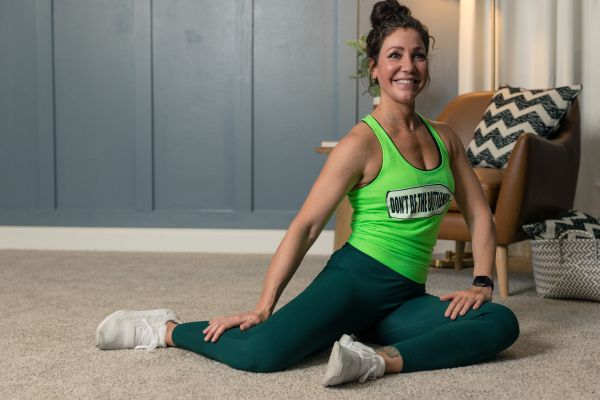
Wrap-Up and Key Points
In this comprehensive exploration of the hips, we’ve uncovered the pivotal role they play in our bodies. From their intricate anatomy to the profound influence they exert on our daily lives, hips are the linchpin to strength, mobility, and overall well-being.
Understanding the complexity of the hips and recognizing the problems associated with tightness are essential steps in our journey to hip health. We’ve delved into the benefits of having strong hips, from enhanced athletic performance and improved posture to injury prevention and functional mobility.
Moreover, we’ve explored invaluable tips for maximizing the potential of your hip flexors. Regular stretching, dynamic warm-ups, strength training, posture awareness, and mobility work are your allies in maintaining and improving hip flexibility and strength.
But remember, this journey isn’t just for athletes or fitness enthusiasts; it’s for everyone. Your hips are the foundation upon which your body’s strength, stability, and mobility are built. By investing in your hip health, you’re investing in your overall well-being, from daily activities to athletic pursuits.
So, whether you’re an athlete looking to boost performance or someone seeking to lead a pain-free, active life, your hips hold the key. Unlock their potential, embrace the benefits of strong hips, and say goodbye to the problems associated with tightness. Your hip journey begins today, and the possibilities are limitless.
by Brian Klepacki, MS, CSCS, FMS2

